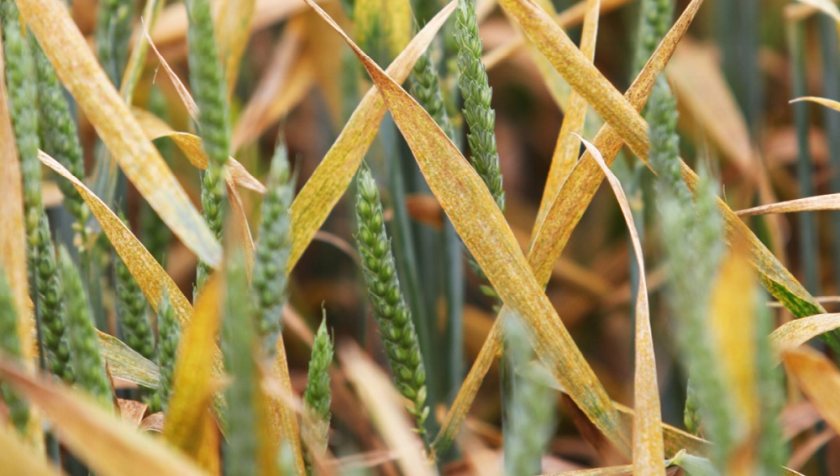
A critical yellow rust resistance gene widely used in winter wheat has been rendered ineffective by newly evolved strains of the pathogen, according to new research.
The development follows an unusual spike in yellow rust cases this spring, affecting both AHDB’s Recommended List (RL) variety trials and commercial winter wheat crops.
In response, the levy organisation issued an early alert in April, urging farmers not to rely solely on the existing RL yellow rust resistance ratings.
The warning allowed growers to adapt their fungicide programmes accordingly, with dry spring conditions enabling timely treatments.
The first signs of trouble appeared in late March during an untreated fungicide RL trial near Sunderland, where several wheat varieties displayed yellow rust symptoms despite being rated as resistant in their young plant stages, according to the 2025/26 RL.
Paul Gosling, AHDB crop production systems scientist and RL manager, said: “We suspected that an important yellow rust resistance gene – Yr15 – had potentially been overcome.
"We subsequently observed similar resistance-breakdown patterns more widely in RL trials, starting in southern Scotland, before spreading down the eastern coast of England, down as far as East Anglia.”
Leaf samples from affected trials near Sunderland and Berwick-upon-Tweed were sent to the NIAB-led UK Cereal Pathogen Virulence Survey (UKCPVS) for analysis.
The results confirmed that the Yr15 gene had failed. Infected varieties not only showed clear signs of the disease but also produced spores prolifically – strong evidence of resistance breakdown.
Molecular testing verified the presence of Yr15 in several affected varieties. Investigations focused on varieties with high adult plant resistance ratings (8 or 9) in the 2025/26 RL, including Hard Group 4 types such as KWS Dawsum, LG Typhoon, and Champion.
Wider testing is now underway, involving both NIAB and researchers at the John Innes Centre in Norwich and the Global Rust Reference Centre in Denmark.
Yr15, discovered in the 1980s, had been a cornerstone of wheat disease management, offering broad-spectrum protection against thousands of genetically diverse yellow rust isolates worldwide.
Mr Gosling added: “Adult plant resistance has clearly taken a knock, but the full impact will depend on a myriad of other resistance genes, which vary from variety to variety.
"Some varieties appear to be fighting back, whereas others are recording unusually high disease levels. Although we have not seen the unusual symptoms towards the south or the west, it appears to be spreading fast.
"No doubt it will impact on variety choice and disease management across the UK next season," he said.
Due to the significant shift in pathogen behaviour, the RL disease ratings for yellow rust in the upcoming 2026/27 edition will be based on data from a single season - harvest 2025 - rather than the usual three to five years.
